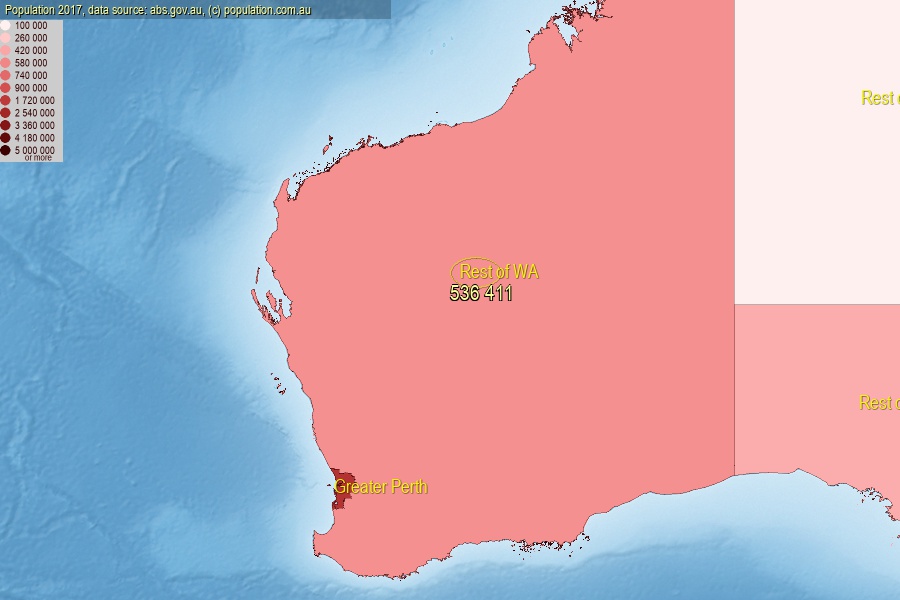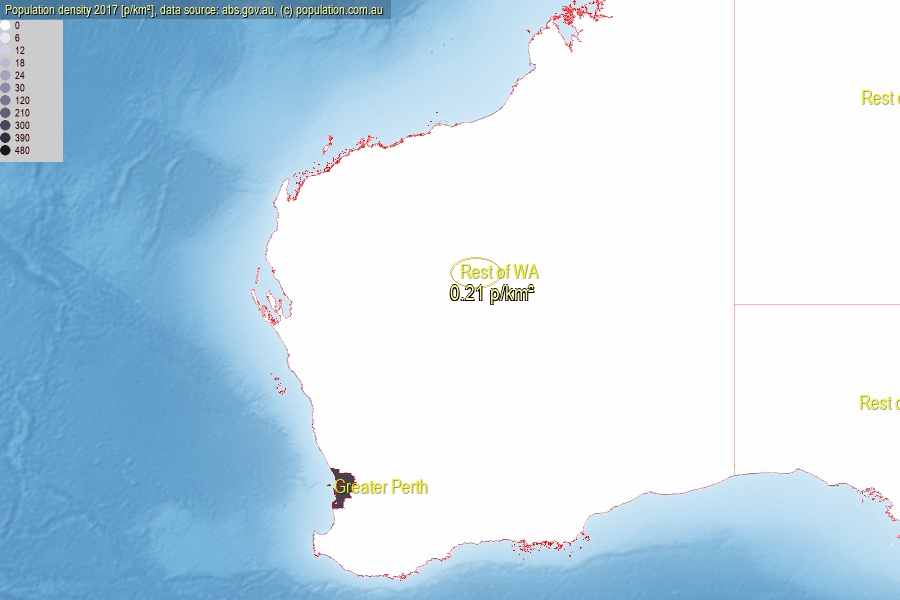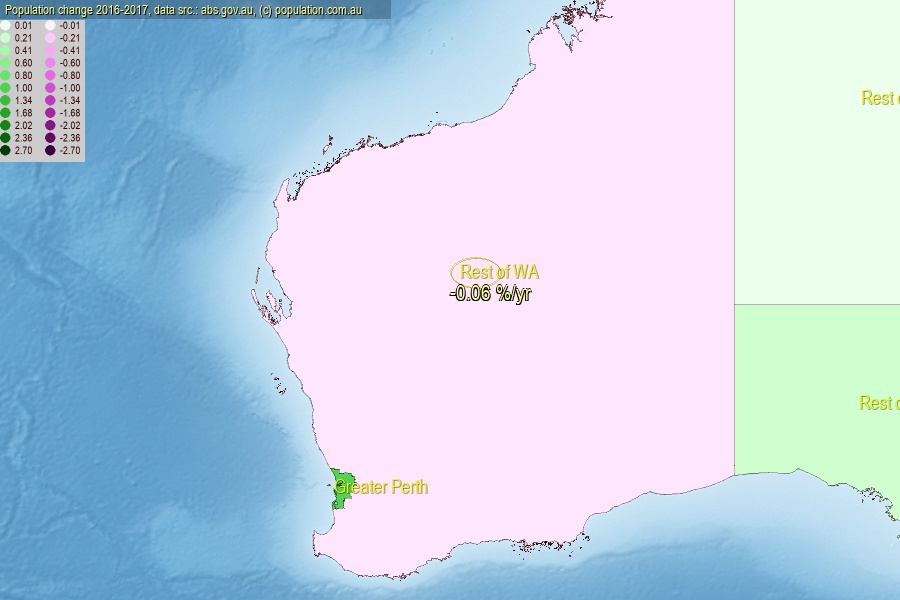 population.com.au
population.com.auLast official estimated population of Rest of WA (as Greater Capital City Statistical Area) was 536 411 people (on 2017-06-30)[2]. This was 2,2% of total Australian population. Area of Rest of WA is 2 520 230,00 km², in this year population density was 0,21 p/km² . If population growth rate would be same as in period 2016-2017 (-0.06%/yr), Rest of WA population in 2025 would be 533 985. [0]



Click to enlarge.
Population [people], population density [p./km²] and population change [%/year] [2]
[1991-1992] +0,26 %/Y
[1992-1993] +0,24 %/Y
[1993-1994] +0,68 %/Y
[1994-1995] +1,11 %/Y
[1995-1996] +1,30 %/Y
[1996-1997] +1,60 %/Y
[1997-1998] +1,39 %/Y
[1998-1999] +1,19 %/Y
[1999-2000] +0,93 %/Y
[2000-2001] +0,88 %/Y
[2001-2002] +0,68 %/Y
[2002-2003] +0,61 %/Y
[2003-2004] +0,57 %/Y
[2004-2005] +1,51 %/Y
[2005-2006] +1,60 %/Y
[2006-2007] +0,85 %/Y
[2007-2008] +2,34 %/Y
[2008-2009] +2,47 %/Y
[2009-2010] +1,76 %/Y
[2010-2011] +1,99 %/Y
[2011-2012] +2,46 %/Y
[2012-2013] +1,96 %/Y
[2013-2014] +0,11 %/Y
[2014-2015] -0,36 %/Y
[2015-2016] -0,93 %/Y
[2016-2017] -0,06 %/Y
[0] Calculated with linear interpolation from officially estimated population
[1] Read more about GCCSA on abs.gov.au
[2] Population data from Australian Bureau of Statistics / ABS.Stat (Population and density: 2017; change: 2016-2017)
[3] Digital Boundaries: Australian Statistical Geography Standard (ASGS) 2016.